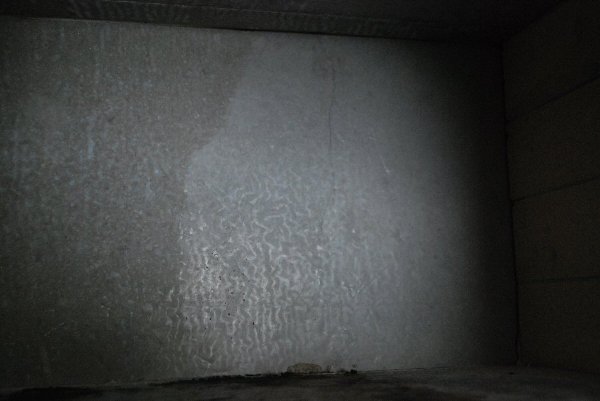Shown in the image is the back slab of a white oven I built 3
years ago. Clearly visible right of centre, is a vertical steam crack.

I fired the heater several times without the door, then put a
couple of medium fires with the door in place. During the third big
fire, at which time I assumed all mechanical water had been
evacuated from the slab, I added more softwood to whiten off the
fire box ceiling, which was at this point only partially white.
As the soft wood burnt, I looked into the oven and actually saw the
crack appear. I could see steam being emitted from the crack along
its entire length, and the material each side of the crack
throbbing with darkness, as steam on its way out of the crack was
absorbed into the dry surface of the slab, and then almost
instantly evacuated through the porosity of the surface.
This image was taken 3 years after I observed the event, and there
has been no change whatsoever. Seen here hot, the fissure is
invisible when cold. I looked up into the firebox to make sure the
crack was not just along the inner surface of the slab. The slab is
indeed cracked side to side.
The castable is Heatcrete 24 ESC with 10 mm aggregate.
Obviously I brought the heater up to temperature too fast. And may
have had a slight excess of water during mixing ?
Neither myself nor the client are concerned that the slab will
fail, and mechanical strength is not an issue with the back slab, as
the 28 inch wide slab only bridges the 10 inches of the opening to
the under hearth smoke path.
Of the four castable elements that form the oven, this one, being in the throat, is affected most by thermal shock.
I have observed fissuring of this slab in several other white
ovens I built. I now take extreme care during the curing
process and have not since observed the phenomenon.
Marcus Flynn
2010
